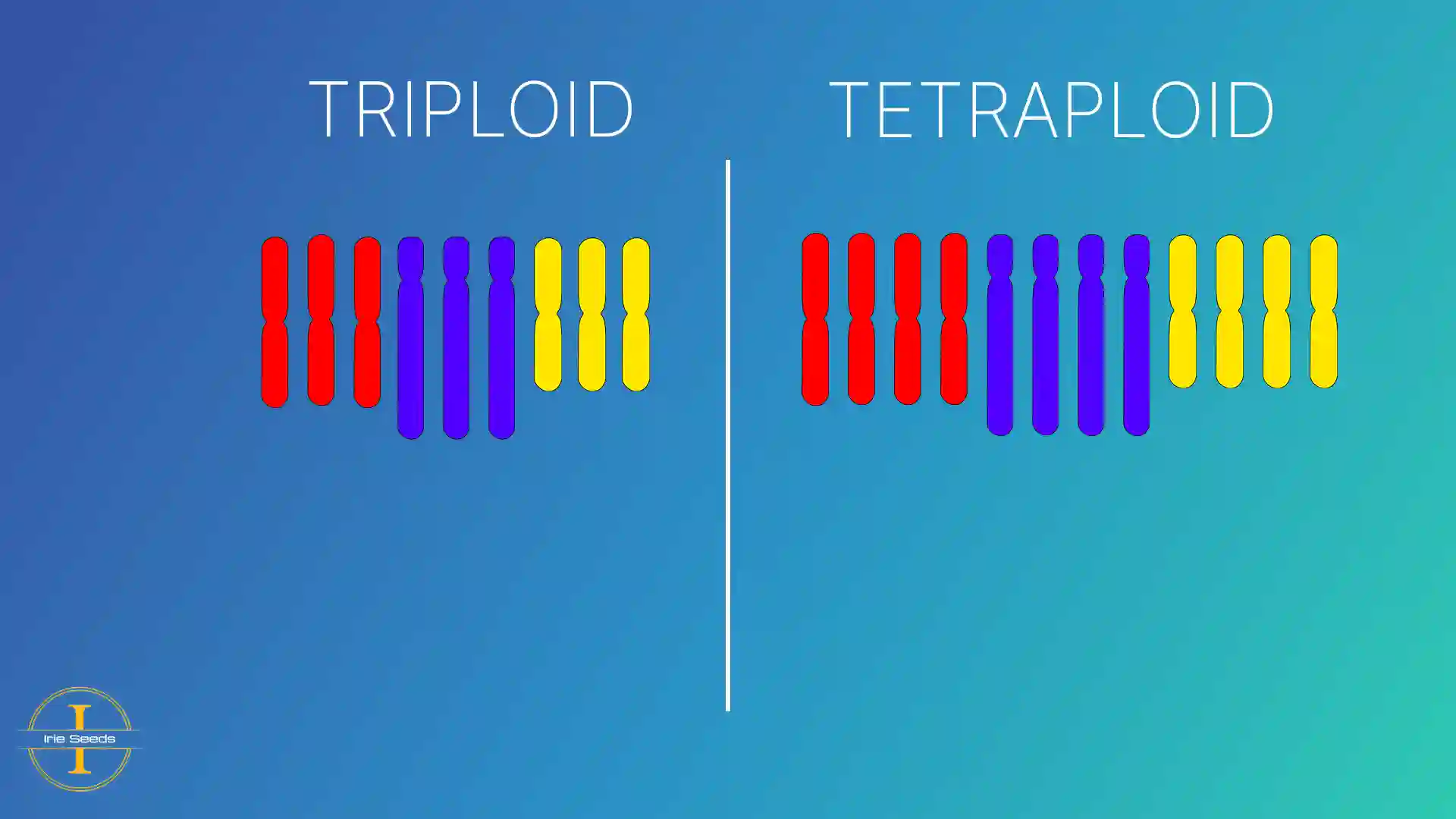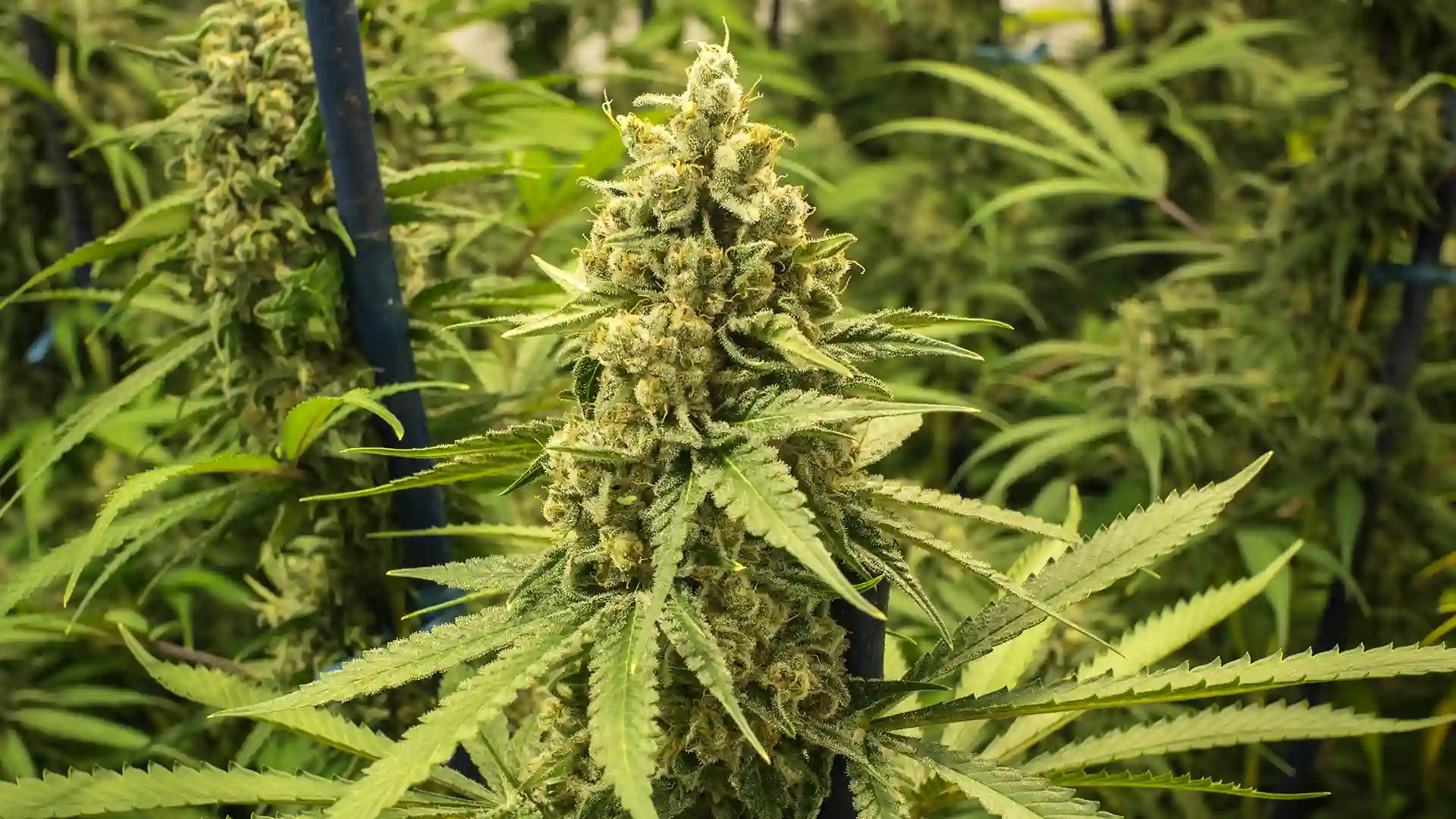Triploid Cannabis Seeds (2025): Seedless Polyploids for Professional Growers
Triploid cannabis represents a practical bridge between classical plant breeding and today’s commercial needs. By crossing a tetraploid (4n) parent with a diploid (2n) parent, breeders produce triploid (3n) offspring that develop normal flowers but rarely set viable seed. For growers, that usually means less anxiety about stray pollen and a steadier path to high‑grade flower—provided the environment and SOPs are dialed in.

What “triploid” means (and how we get there)
In standard (diploid) cannabis, chromosomes come in pairs—one set from each parent. If a breeder first creates a tetraploid line (chromosomes doubled) and then crosses it with a diploid, the progeny carry three sets (3n). During meiosis, those sets struggle to pair evenly; as a result, functional gametes are rare and seed formation tends to fail. The crop grows and flowers much like a diploid, but with a strong tendency toward seedless (sinsemilla) results—even when low levels of pollen are present in the area.
- 3n = 4n × 2n (tetraploid crossed with diploid).
- Mechanism: uneven chromosome pairing disrupts fertile gamete formation.
- Outcome: flowers form normally; seeds usually do not (seedless crops).
Benefits and limits you can actually plan around
Seedlessness is the headline, but operational gains depend on the specific line and your facility. Triploids are sometimes described as more vigorous or more resinous; those claims are line‑dependent and should be verified with real trials and lot‑tied COAs. In practice, the biggest advantages we see are predictable flower quality in mixed‑use regions and tighter finish windows that simplify labor and post‑harvest planning. Don’t assume higher potency or yield without data—treat each line as you would a new hybrid: run side‑by‑side, measure, and scale only when the numbers repeat.
- Use technical data sheets (TDS) for target finish windows and canopy guidelines.
- Verify COAs (methods, totals incl. acidic forms, sample & pack dates) by lot.
- Track uniformity on your site (Height/Yield CoV) across seasons.
Agronomy for Thailand & the tropics
In tropical greenhouses, humidity writes the rules. Engineer airflow and dehumidification before you chase PPFD. Keep canopies open so air actually moves through the crop, schedule night purge cycles to prevent condensation, and manage VPD by phase. As a starting point, greenhouse peaks around 650–800 µmol·m⁻²·s⁻¹ work well for many programs, while sealed indoor rooms often run 800–950 µmol·m⁻²·s⁻¹ when cooling and CO₂ allow. Favor lines with proven PM/Botrytis tolerance and validate the stated finish window under your wet‑season conditions.

Propagation & production
Triploids are mostly propagated by cuttings from indexed mother stock, because 3n plants rarely produce viable seed. Keep a dedicated mother room, test at intake, and rotate RT‑qPCR or LAMP checks on mother benches. Label lots clearly and avoid bench comingling. In facilities that also run diploids, keep tools and PPE segregated by room to reduce pathogen movement.
QA, compliance & labels
Treat documentation as part of the product. Each lot should resolve to a TDS, a lot‑specific COA, and—if seeds are being sold—ISTA/Blue‑ISTA germination and purity data. Labels should comply with local rules and disclose cannabinoid totals, methods, and traceability IDs. For Thailand, seed import follows plant‑quarantine processes at the Department of Agriculture; regulations evolve, so confirm the current notice set before shipping.
A note on HLVd hygiene
Hop Latent Viroid (HLVd) undermines vigor and resin quality, especially in mother/clone systems. The defense is layered: source clean material, test at intake, quarantine new arrivals, sanitize tools and surfaces, and cull positives rather than running months of slow losses. A simple intake → test → action flow keeps teams aligned.
FAQ
Are triploids GMO?
No. Polyploidy changes chromosome number; it doesn’t insert foreign DNA. It’s still “genetic manipulation” in a broad sense, so follow your jurisdiction’s labeling rules.
Do triploids always out‑yield or test higher?
Not by default. Some lines may, others won’t. Plan trials, measure, and scale what repeats.
Can triploids make seed?
They rarely make viable seed. Treat 3n plants as clonally propagated for production; keep breeders’ 4n/2n systems separate from flowering rooms.
Educational content for professional audiences. Not legal advice; verify local regulations and lab guidance.
